Real eState
Menkes plays major role in Toronto downtown east revival | RENX – Real Estate News EXchange


The Sugar Wharf mixed-use project is one of Menkes’ major developments in Toronto’s downtown east neighbourhood. (Courtesy Menkes)
Menkes was a pioneer in developing Toronto’s now-thriving south core area and is now making its mark in the city’s evolving downtown east node.
“The overall area has the best of both worlds,” Menkes vice-president of office and retail Sean Menkes told RENX. “You have close proximity to the downtown core and all of its benefits.
“You also have access to the eastern waterfront, which is undergoing the largest revitalization of its kind in North America. A lot of that has to do with Waterfront Toronto’s efforts over the last two decades or so on infrastructure improvements.”
He cited bicycle lanes and paths, parks, improved streetscapes and sidewalks, and the promise of improved public transit in the future as some of the reasons people are choosing to live and work in downtown east.
“The eastern waterfront, and downtown east in particular, is planned to be a full-life-cycle neighbourhood that will be able to appeal to office workers, residents, tourists and anyone in the city who wants to come and visit the amazing amenities.”
Office and residential density fuel retail
There are several large office buildings either already built or being developed in downtown east, and there’s a swath of residential development fuelling evening and weekend demand for area retailers. There are two major mixed-use projects from Menkes making substantial progress and another will launch condominium sales this fall.
“Office and residential density are fuelling retail, and the retail that’s planned to be delivered are part of the amenities that’s fuelling residential and office demand,” said Sean Menkes. “It’s a self-fulfilling prophecy.
“As companies begin to move, and as residents begin to buy units in new condo towers, they’re buying based on retail amenities. And retailers want to be in this neighbourhood because of all that office and residential demand that they see coming. It’s all working together at the same time and we have critical mass in each category.”
“If we pick an area where we want to work, we just keep looking for sites in that area because we’re going to continue to add value,” Menkes executive vice-president of high-rise residential Jared Menkes told RENX in a separate interview.
“Convenience is paramount and residents are looking for experiences, and we want to cater to that through finding unique retail offerings, adding office and residential. It creates a 24-7 neighbourhood.”
Downtown east office buildings offer advantages
Since the large office buildings in downtown east are all relatively new, or still under construction, Sean Menkes said they’re “better equipped to handle the needs of tenants today than older buildings in the core or on King West.
“There’s better air quality and natural light. You’re steps to the core but you’re also benefitting from having less congestion. Sustainability is intertwined with every facet of the building’s operations.
“As tenants contemplate their return to work … they’re choosing to lease space in these types of buildings that can accommodate their employees, improve their productivity and keep them safe. These are all trends that existed pre-pandemic and they’re amplified post-pandemic.”
Toronto-headquartered Menkes was founded in 1954 and is a fully integrated real estate company involved in the construction, ownership and management of office, industrial, retail and residential properties. It’s one of the largest private developers in Canada, with a primary focus in the Greater Toronto Area.
Jared Menkes told RENX last November his company will develop almost six million square feet of space on Toronto’s waterfront in the next eight years.
Much of Menkes’ downtown east office activity is located close to Lake Ontario, and Sean Menkes said most of the meaningful sites unlocking the waterfront are under development. There are other sites in downtown east, however, and the company plans to remain active in the area — though Sean Menkes said there’s nothing in the pipeline that he can speak about at this point.
“When we invest in a neighbourhood like the waterfront or the south core or downtown east, we like to do it at scale,” he added. “We believe in the area and have made a bet on its future.”
“Prices continue to rise as sites continue to become harder to find,” said Jared Menkes. “That low-hanging fruit, which was old parking lots, are all gone.”
Sugar Wharf
Sugar Wharf is a 4.6-million-square-foot mixed-use development covering four city blocks and 11 acres of the former Liquor Control Board of Ontario (LCBO) land acquired by Menkes in 2016.
Sugar Wharf’s first phase includes a building with 600,000 square feet of office space and 75,000 square feet of retail on the first and second floors. The primary office tenants will be the LCBO, Toronto Region Board of Trade and Richardson Wealth.
Sugar Wharf ‘s first phase will also include two condos with 1,600 units and another 65,000 square feet of retail.
The retail elements will include a new 25,000-square-foot flagship LCBO store, a 30,000-square-foot grocery store, a 40,000-square-foot fitness facility, plus food and beverage offerings.
The office building will be completed this summer and the multifamily component will be delivered next summer, with the retail coming on board over the next year.
Sugar Wharf’s second phase will start in 2022 and have an additional 3,000 multi-family units in three buildings, 90,000 square feet of retail, a 50,000-square-foot elementary school, and a 2.5-acre public park that will be turned over to the city to benefit the entire community.
The Whitfield
Jared Menkes believes younger residents age out of west-side neighbourhoods such as Liberty Village, King Street West and Queen Street West, whereas the east side better accommodates all age groups and household types.


Menkes is developing The Whitfield at the corner of Front and Sherbourne streets. (Courtesy Menkes)
Menkes’ next mixed-use building in the area will be The Whitfield at the corner of Front and Sherbourne streets, within easy walking distance of St. Lawrence Market, the financial core and the waterfront. The 38-storey building will have 460 condo units and two floors of retail and office space.
Units will range from studios to three bedrooms to accommodate a range of tenants.
Giannone Petricone Associates is the architectural firm for The Whitfield, Figure3 is the interior designer and Janet Rosenberg & Studio is the landscape architect.
The Whitfield’s amenities will include a large outdoor terrace, programmed landscaping, a kids room, a party room, co-working space and a theatre.
Sales will launch early this fall. A January 2022 construction start is anticipated, with occupancy expected in mid-2025.
A gas station, a Tim Hortons and a music studio/rehearsal space are on the site now. A heritage component on the property will be maintained.
Waterfront Innovation Centre
The 475,000-square-foot Waterfront Innovation Centre is comprised of two buildings connected by a second-floor bridge that’s 15,000 square feet. It will include an amenity floor with three conference rooms and a variety of seating areas where tenants can work.
“This is something that a lot of tenants are looking for today as a way to engage their employees differently,” Sean Menkes said. “It provides different work environments for them to be in so they don’t need to be stuck at their work station or in their office all day.
“They can meet with their colleagues or do individual work in a new environment that faces Sugar Beach.”
Waterfront Innovation Centre, which will be completed this fall, is about two-thirds leased to advertising and marketing company WPP. MaRS Discovery District, in connection with the University of Toronto, has more than 50,000 square feet. There are also a few other smaller office tenants.
Waterfront Innovation Centre will also include about 20,000 square feet of retail, including a 7,500-square-foot restaurant at the entrance to Sugar Beach.
Retail struggles during office closures
Menkes’ 25 York office building helped kick off the south core boom when it was completed in 2009, and its One York mixed-use office building has 150,000 square feet of retail on its first two floors.
Sean Menkes said retail tenants in its downtown mixed-use office buildings have struggled during the pandemic because their main customers have been building tenants and visitors to local amenities, such as Scotiabank Arena, both of which have been largely absent. Retailers have been using government assistance programs and Menkes has been helping out, so few have closed for good.
“Our view is that retail is an amenity for a project and we want to make sure that these hand-picked retailers that we put into the buildings are there for the office occupants when they return to work,” said Sean Menkes. “We’ve had a very accommodating approach to work with our retailers to make sure we can support them as they work through this difficult time.”
Real eState
Judge Approves $418 Million Settlement That Will Change Real Estate Commissions
|
|


A settlement that will rewrite the way many real estate agents are paid in the United States has received preliminary approval from a federal judge.
On Tuesday morning, Judge Stephen R. Bough, a United States district judge, signed off on an agreement between the National Association of Realtors and home sellers who sued the real estate trade group over its longstanding rules on commissions to agents that they say forced them to pay excessive fees.
The agreement is still subject to a hearing for final court approval, which is expected to be held on Nov. 22. But that hearing is largely a formality, and Judge Bough’s action in U.S. District Court for the Western District of Missouri now paves the way for N.A.R. to begin implementing the sweeping rule changes required by the deal. The changes will likely go into full effect among brokerages across the country by Sept. 16.
N.A.R., in a statement from spokesman Mantill Williams, welcomed the settlement’s preliminary approval.
“It has always been N.A.R.’s goal to resolve this litigation in a way that preserves consumer choice and protects our members to the greatest extent possible,” he said in an email. “There are strong grounds for the court to approve this settlement because it is in the best interests of all parties and class members.”
N.A.R. reached the agreement in March to settle the lawsuit, and a series of similar claims, by making the changes and paying $418 million in damages. Months earlier, in October, a jury had reached a verdict that would have required the organization to pay at least $1.8 billion in damages, agreeing with homeowners who argued that N.A.R.’s rules on agent commissions forced them to pay excessive fees when they sold their property.
The group, which is based in Chicago and has 1.5 million members, has wielded immense influence over the real estate industry for more than a century. But home sellers in Missouri, whose lawsuit against N.A.R. and several brokerages was followed by multiple copycat claims, successfully argued that the group’s rule that a seller’s agent must make an offer of commission to a buyer’s agent led to inflated fees, and that another rule requiring agents to list homes on databases controlled by N.A.R. affiliates stifled competition.
By mandating that commission be split between agents for the seller and buyer, N.A.R., and brokerages who required their agents to be members of N.A.R., violated antitrust laws, according to the lawsuits. Such rules led to an industrywide standard commission that hovers near 6 percent, the lawsuits said. Now, agents will be essentially blocked from making those commission offers, a shift that will, some industry analysts say, lower commissions across the board and eventually force down home prices as a result.
Real estate agents are bracing for pain.
“We are concerned for buyers and potentially how we will get paid for working with buyers moving forward,” said Karen Pagel Guerndt, a Realtor in Duluth, Minn. “There’s a lot of ambiguity.”
The preliminary approval of the settlement comes as the Justice Department reopens its own investigation into the trade group. Earlier this month, the U.S. Court of Appeals for the District of Columbia overturned a lower-court ruling from 2023 that had quashed the Justice Department’s request for information from N.A.R. about broker commissions and how real estate listings are marketed. They now have the green light to scrutinize those fees and other N.A.R. rules that have long confounded consumers.
“This is the first step in bringing about the long awaited change,” said Michael Ketchmark, the lawyer who represented the home sellers in the main lawsuit. “Later this summer, N.A.R. will begin changing the way that homes are bought and sold in our country and this will eventually lead to billions of dollars and savings for homeowners.”
Under the settlement, homeowners who sold homes in the last seven years could be eligible for a small piece of a consolidated class-action payout. Depending on how many homeowners file claims by the deadline of May 9, 2025, that could mean tens of millions of Americans.





Real eState
Two matching megacomplexes to totally transform Toronto neighbourhood
|
|
A pair of twinned proposals aim to completely redefine the skyline of Toronto’s midtown area with an architectural statement that would set the neighbourhood apart from other high-rise clusters in the city.
Two separate proposals from developer Madison Group at 110 and 150 Eglinton Avenue East have been resubmitted to city planners, calling for two pairs of mixed-use condominium towers with standout designs unlike anything that exists in the city today.
In a surprising twist from a developer not exactly known for breaking the bank on architecture, the proposals now boast brand-new complementary designs from acclaimed firm Rafael Viñoly Architects.
The 110 Eglinton site, currently home to a pair of mid-rise office buildings, would be demolished and built out with two 58-storey towers.
A few doors to the east, the 150 Eglinton site includes a handful of mid-rise and low-rise commercial buildings along Eglinton, wrapping around Redpath Avenue. These buildings would also be demolished and replaced with a pair of 61-storey towers.
All four towers will feature matching designs boasting red aluminum cladding forming vertical piers that accentuate the towers’ heights, though there will be some key differences between the pairs at 110 and 150 Eglinton.
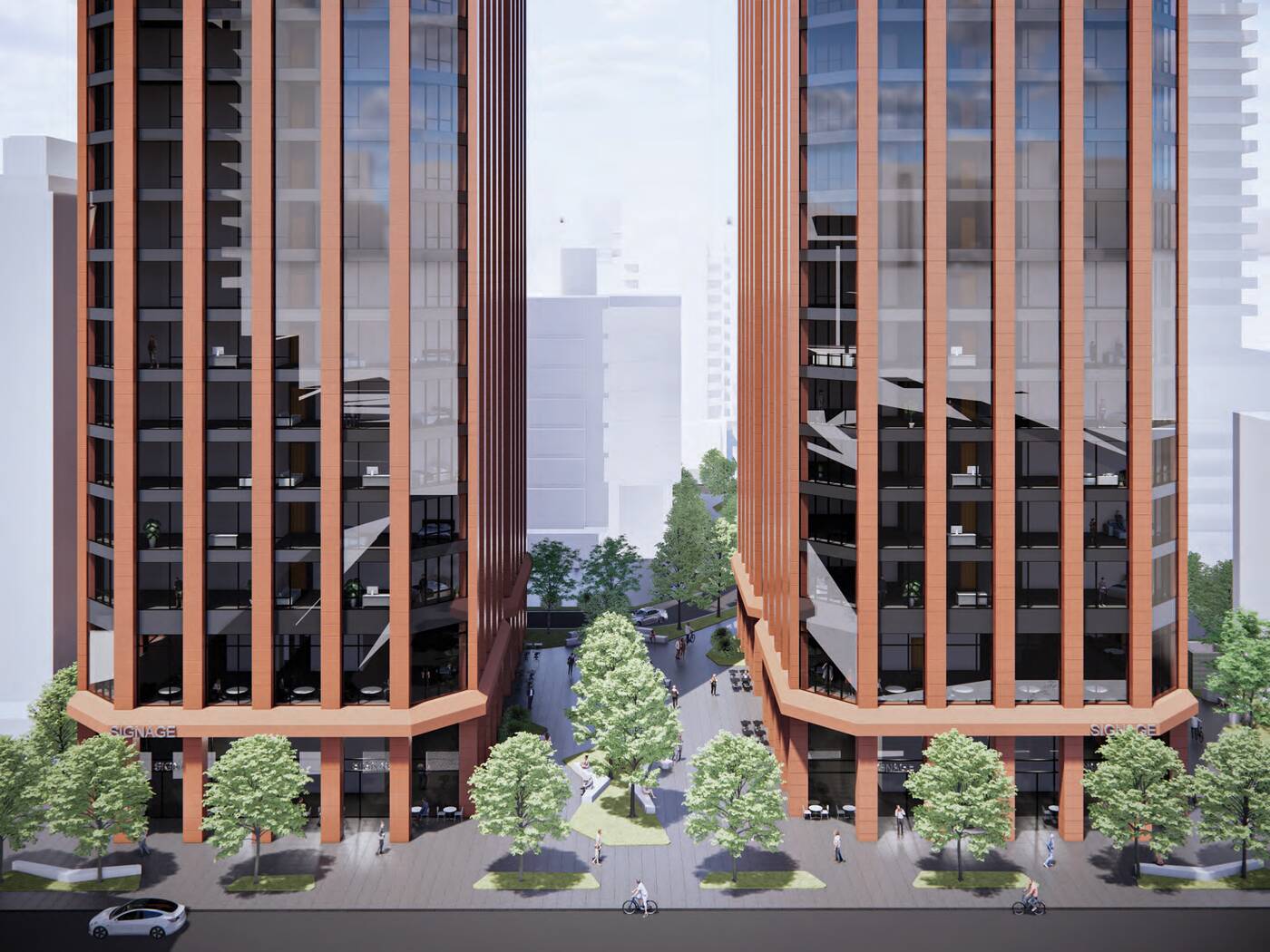

150 Eglinton East
The 58-storey towers at 110 Eglinton East will be linked via an enormous floating bridge spanning levels five through 10, framing a large open public space below and supporting an elevated residential amenity floor above.
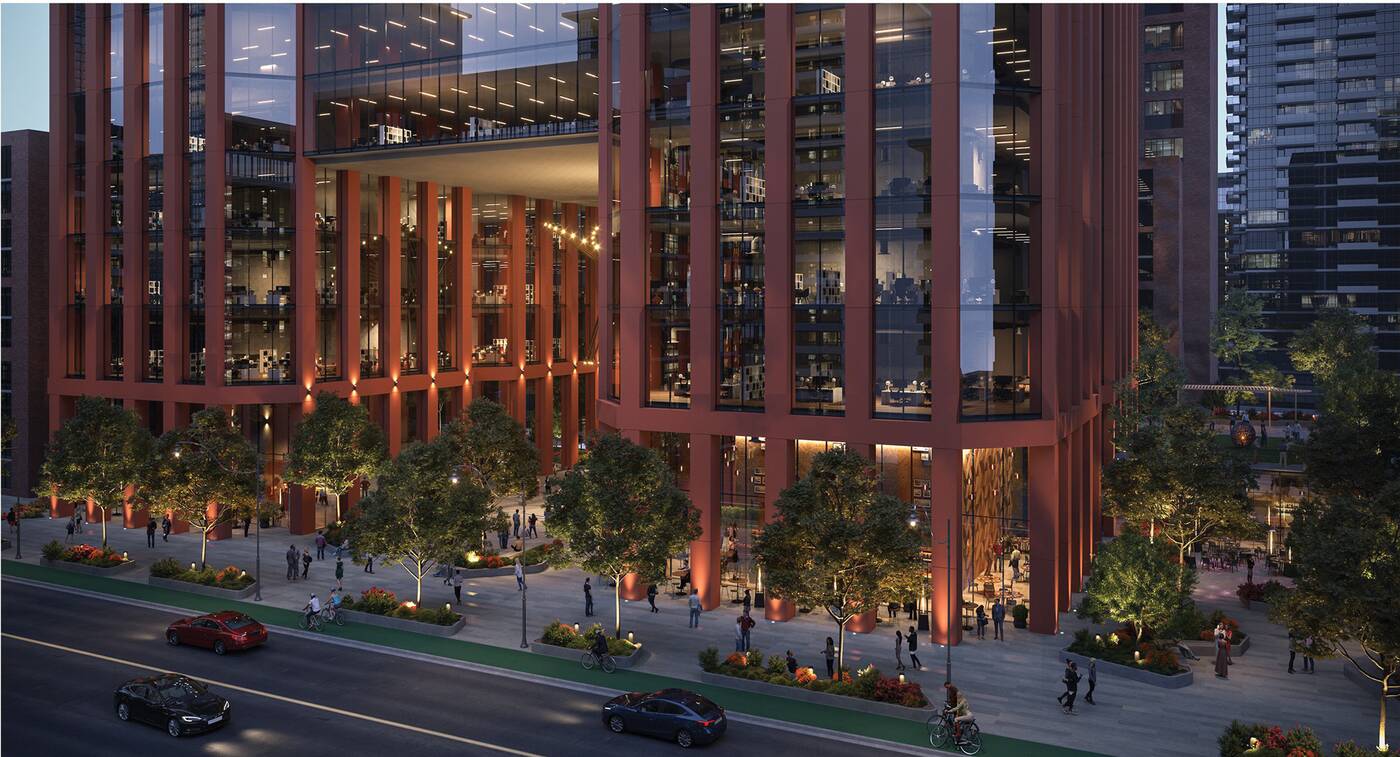

The 61-storey towers lack a skybridge, but will also feature amenity levels with panoramic views, including spaces on the 28th and 40th floors.
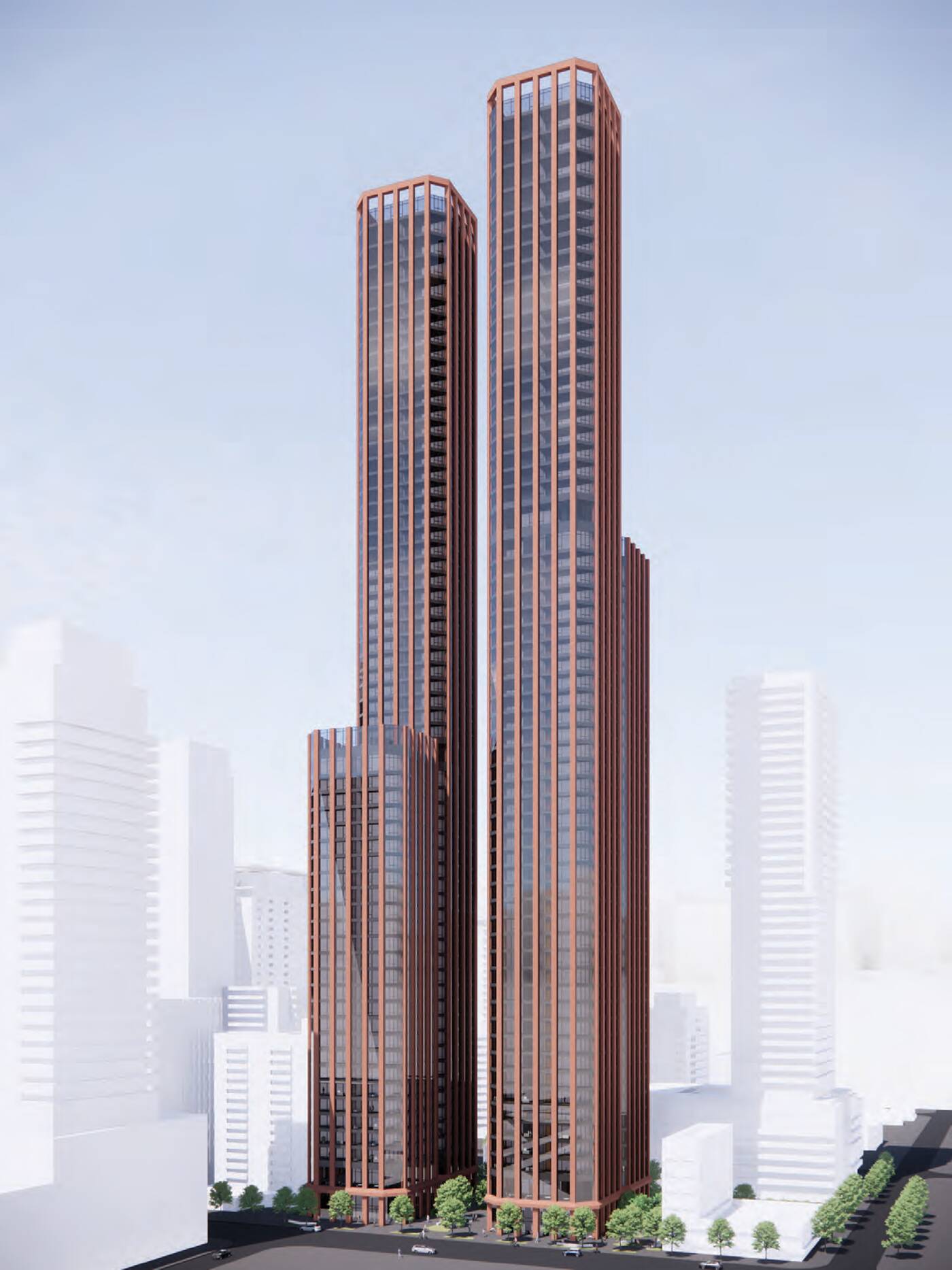

At heights of just over 236 metres, these four towers all stand taller than anything that exists in the neighbourhood as of 2024.
The combined proposals would add a staggering 3,364 condominium units to the neighbourhood, along with new retail and office space to maintain employment uses along this evolving corridor.
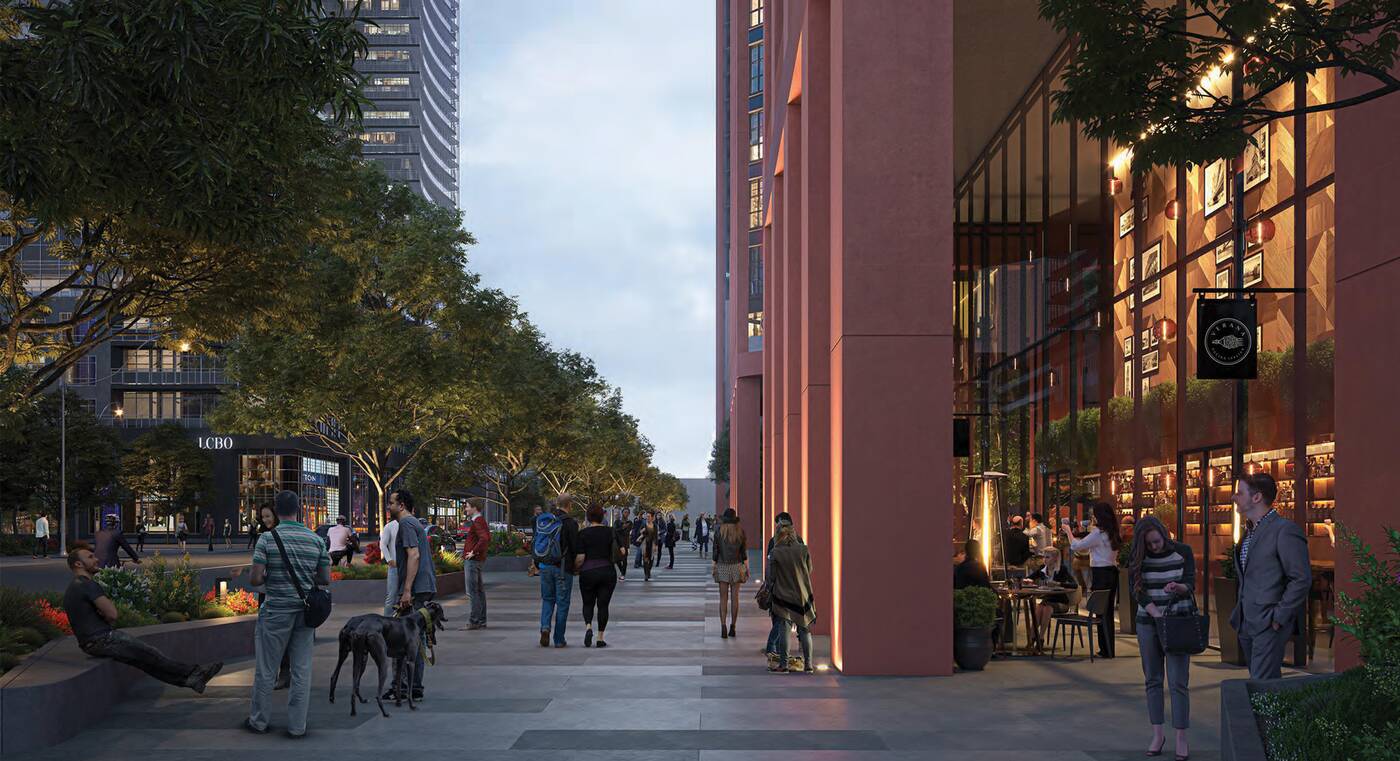

One standout of the proposals is a series of privately-owned publicly accessible spaces measuring over 5,000 square metres across the combined sites.


Among the publicly-accessible spaces proposed are the aforementioned area below the bridge at 110 Eglinton, along with pedestrian walkways that will allow foot traffic to filter through the block between Eglinton and Roehampton Avenue to the north.
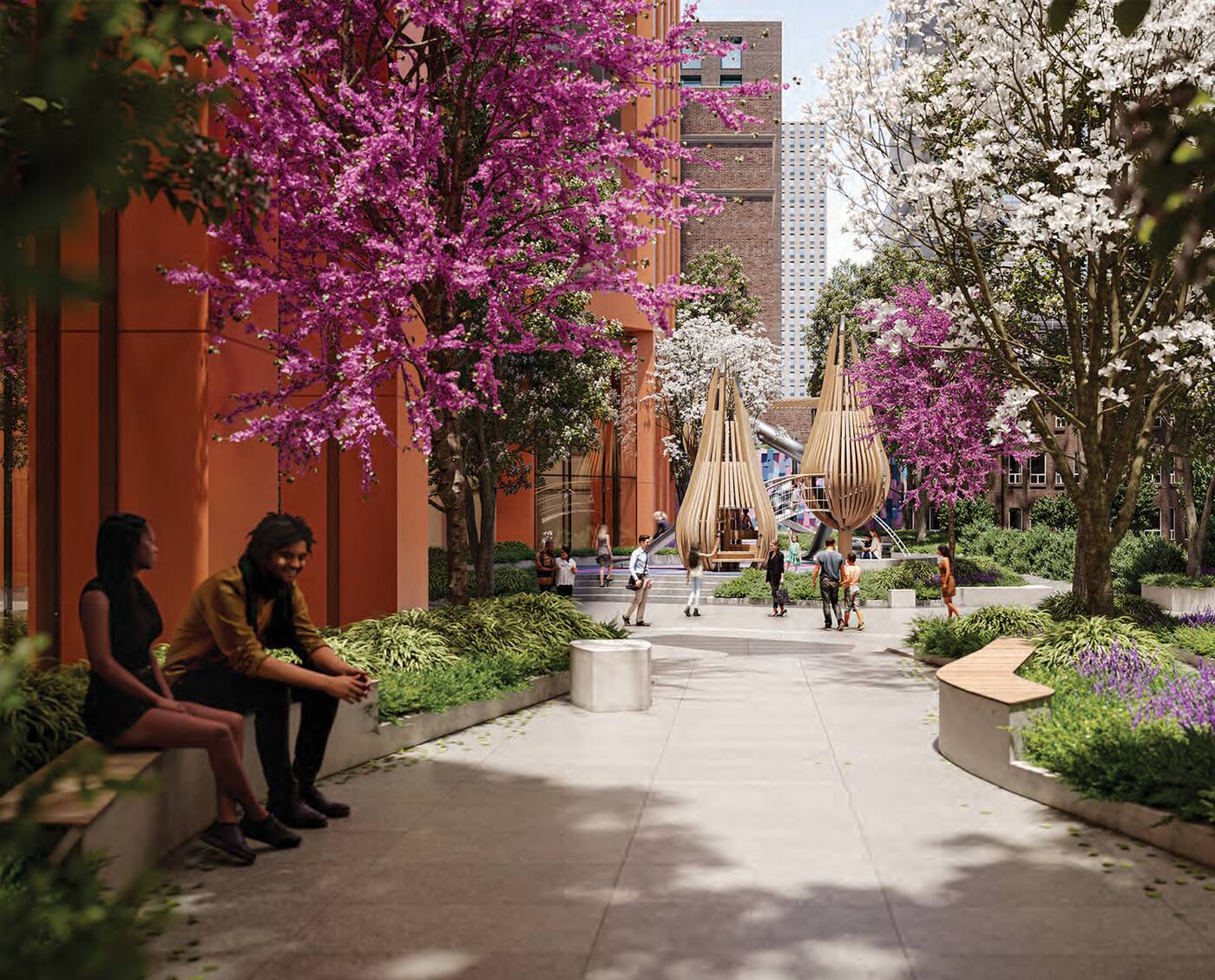

It’s the type of proposal one would expect to be met with significant local backlash. However, early feedback from the neighbourhood is surprisingly positive.
Local city councillor Josh Matlow took to X to voice his support for the project, calling it “genuinely exciting.”
“The architecture is beautifully designed,” said Matlow, hyping up locals with a promise that renderings of the new public space would wow the community. It’s remarkable for our community and city — like bringing Rockefeller Center to midtown Toronto,” said Matlow.





Real eState
This Toronto home is a ’90s decor trip but a steal at only $600K
|
|
If you’re a millennial and grew up in the ’90s, you’ll probably remember a fair amount of ’90s home decor trends that might still haunt you to this day.
There were sponge-painted walls, all-beige everything, wallpaper borders, oak cabinets, carpets in places where there shouldn’t be carpets, bedroom sets from big-box stores, Southwestern or Tuscan decor in homes that weren’t in Arizona or Italy, and the list goes on.
We thought we’d left those troubling times in the past, but 39 Hatherley Rd. really brings back all those memories.
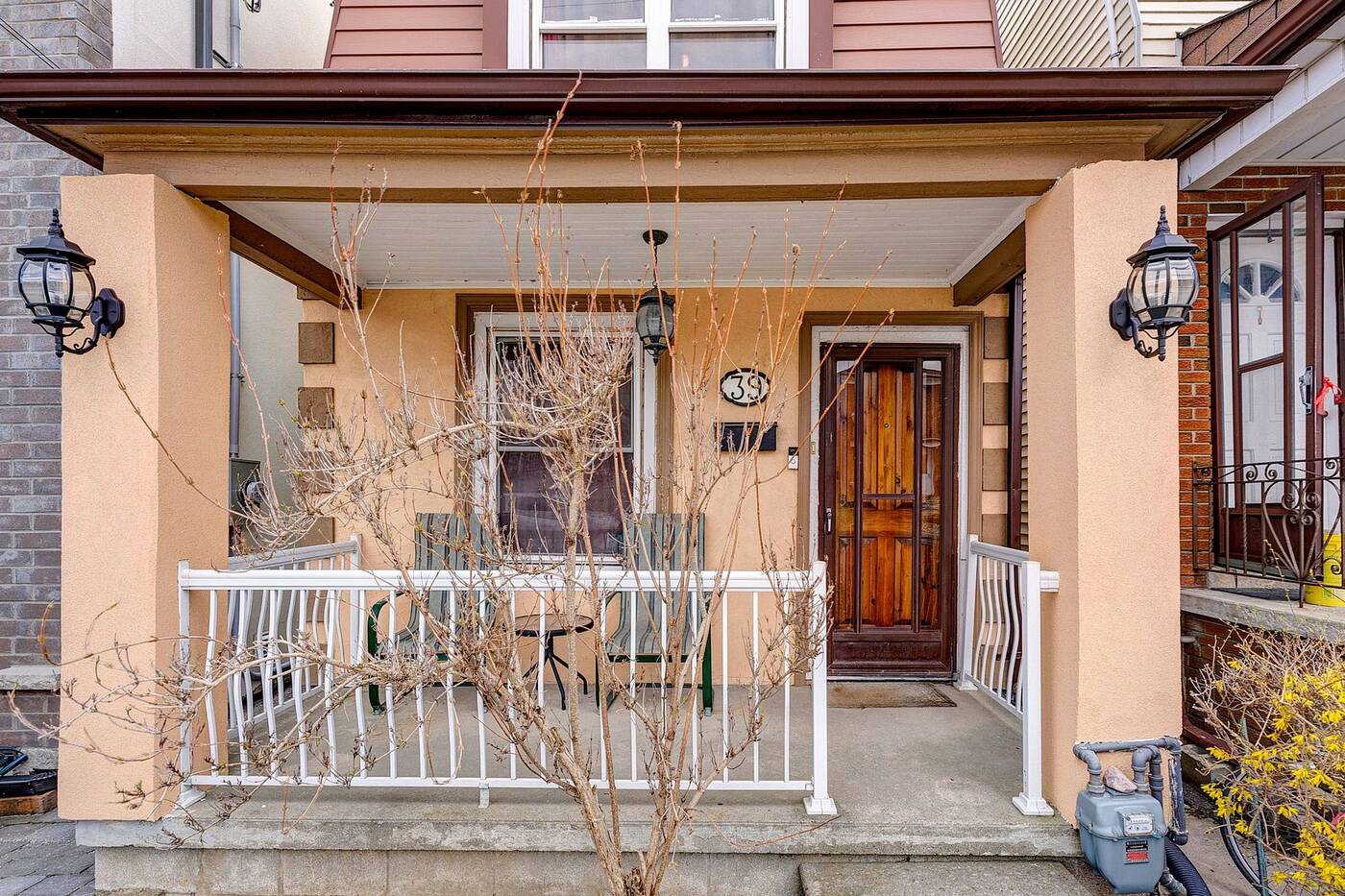

The front porch.
Somehow this two-bedroom, one-bathroom house hit almost every ’90s trend, except for carpets in the bathroom (phew!).
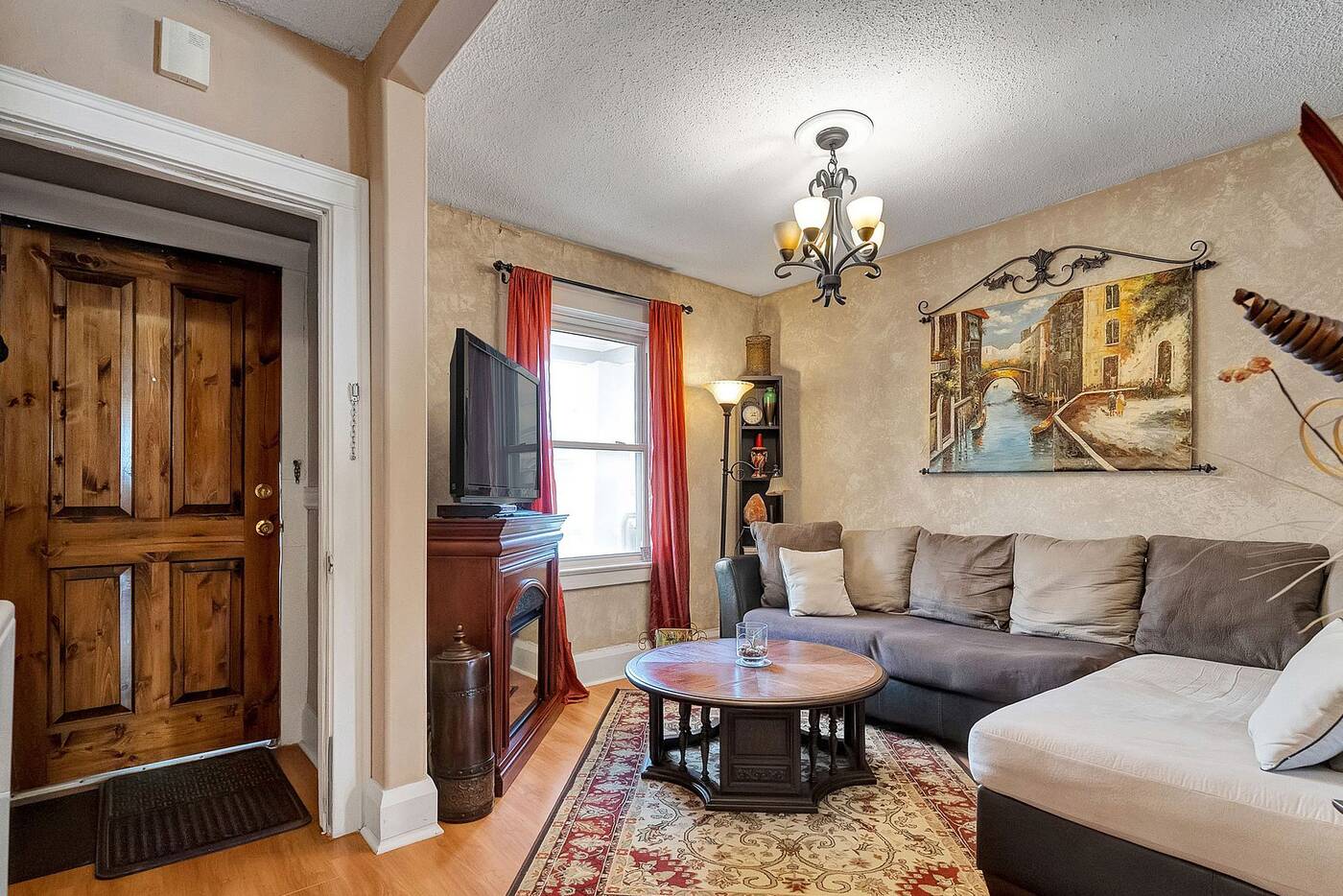

The entryway.
What’s weird is this house has changed ownership a few times since the 90s. In fact, it was most recently purchased in 2010 for $250,000.
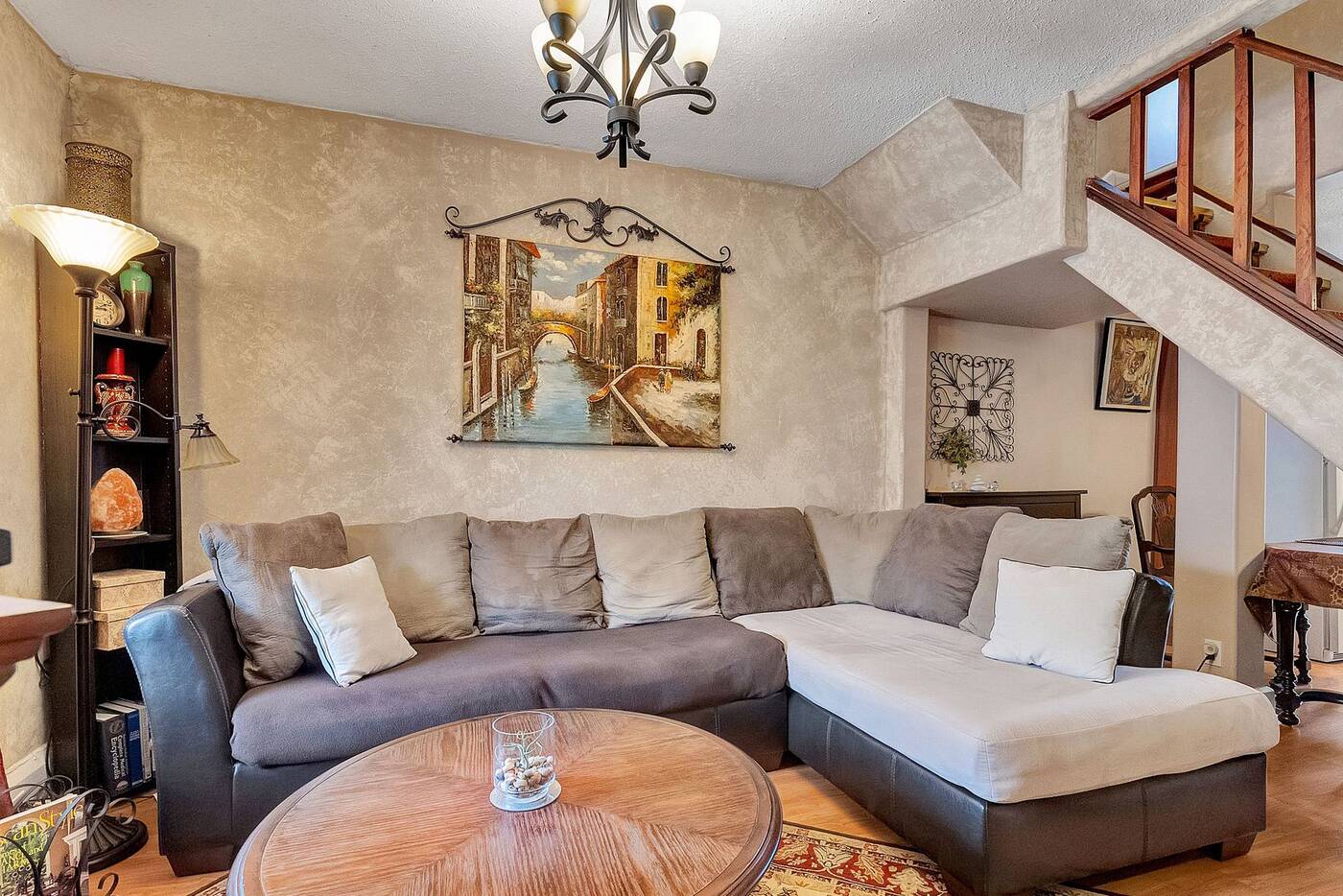

The living room.
So it’s somewhat surprising that when you look at past listing photos, almost nothing has changed. In fact, it seems they added the sponge-painted walls in 2010.
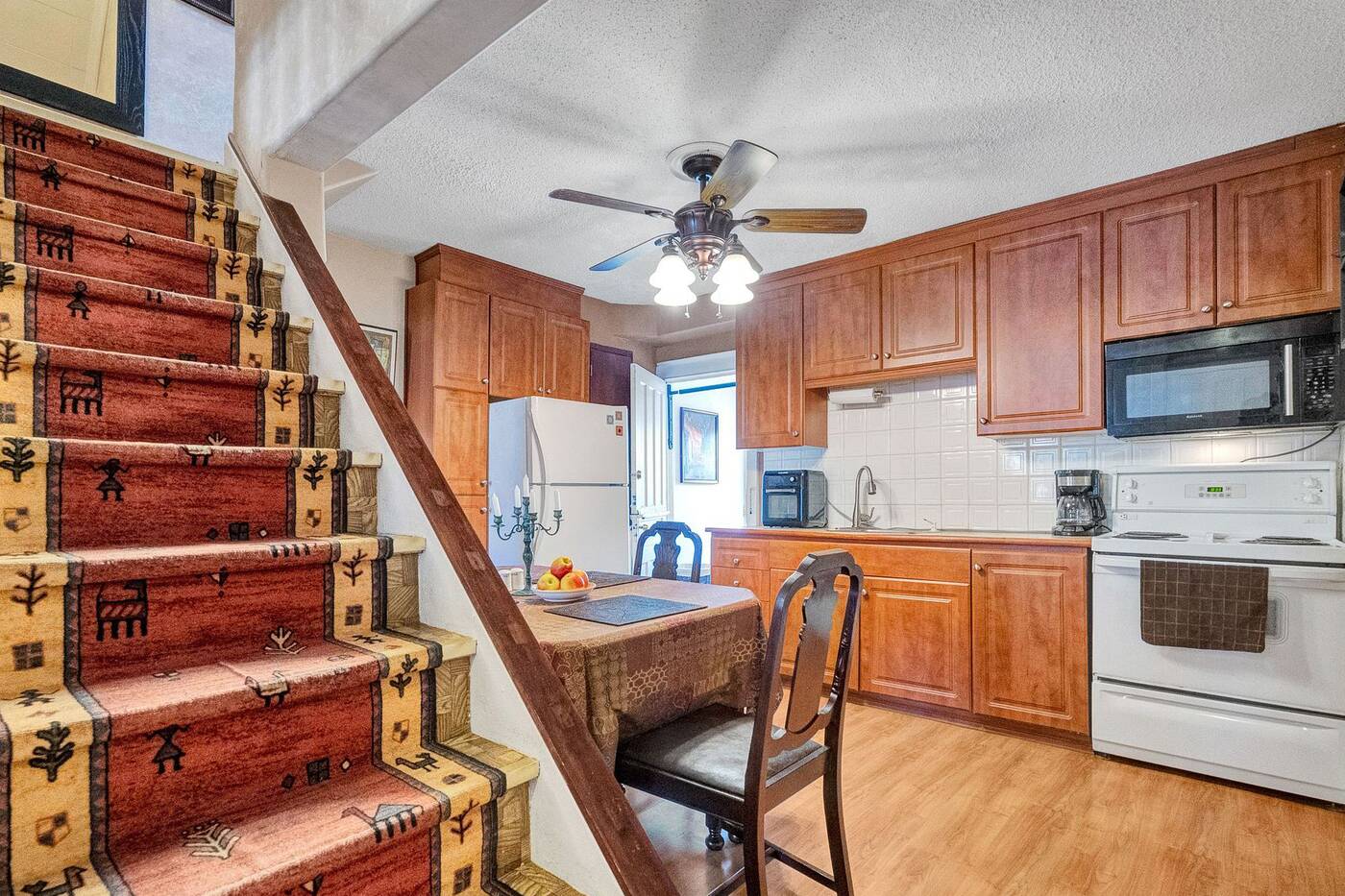

The kitchen.
But despite 39 Hartherley Rd. being a total throwback, this house is, as the listing says, “a diamond in the rough.”
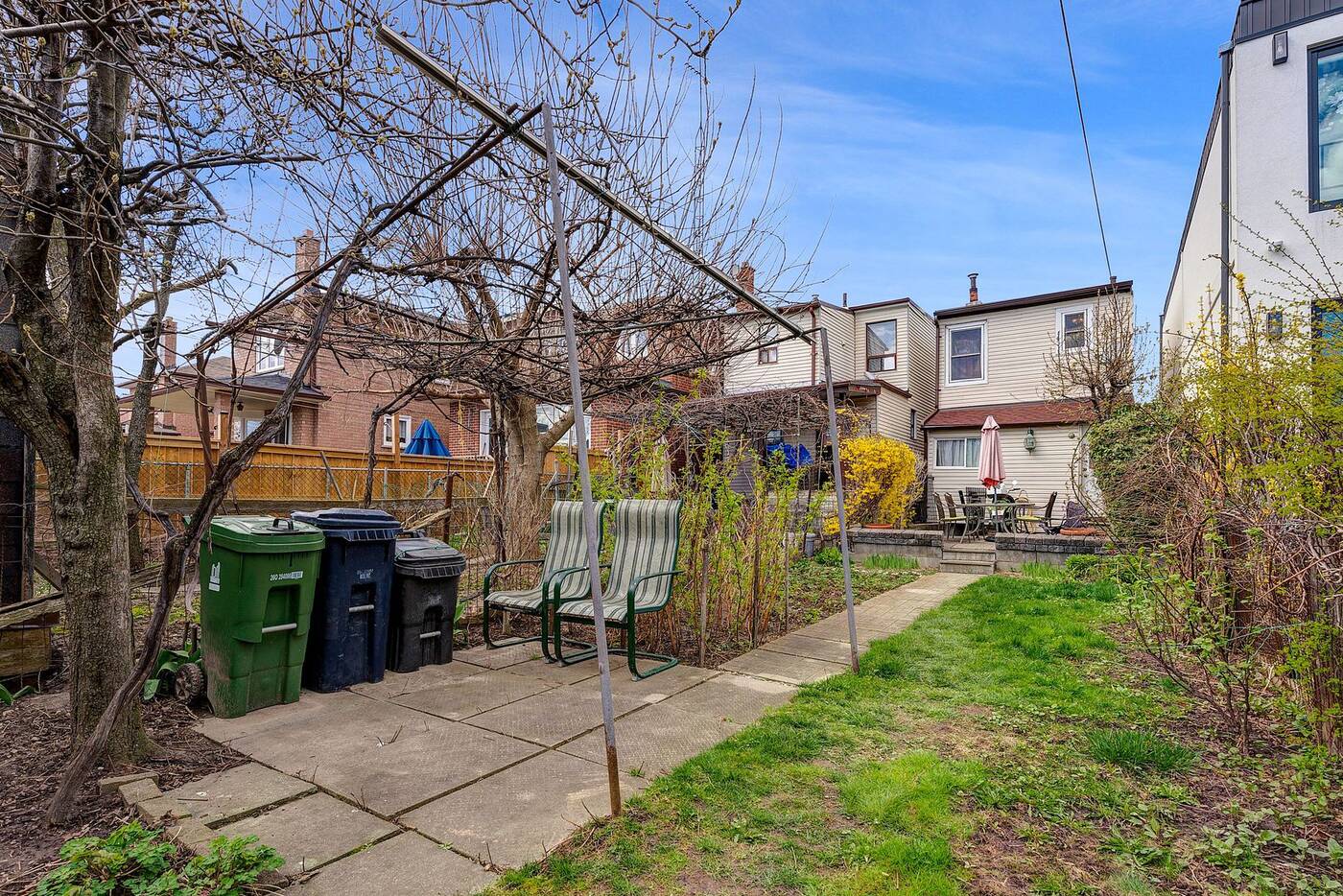

The backyard.
First off, it’s a detached house with a 125-foot deep lot in a good location.
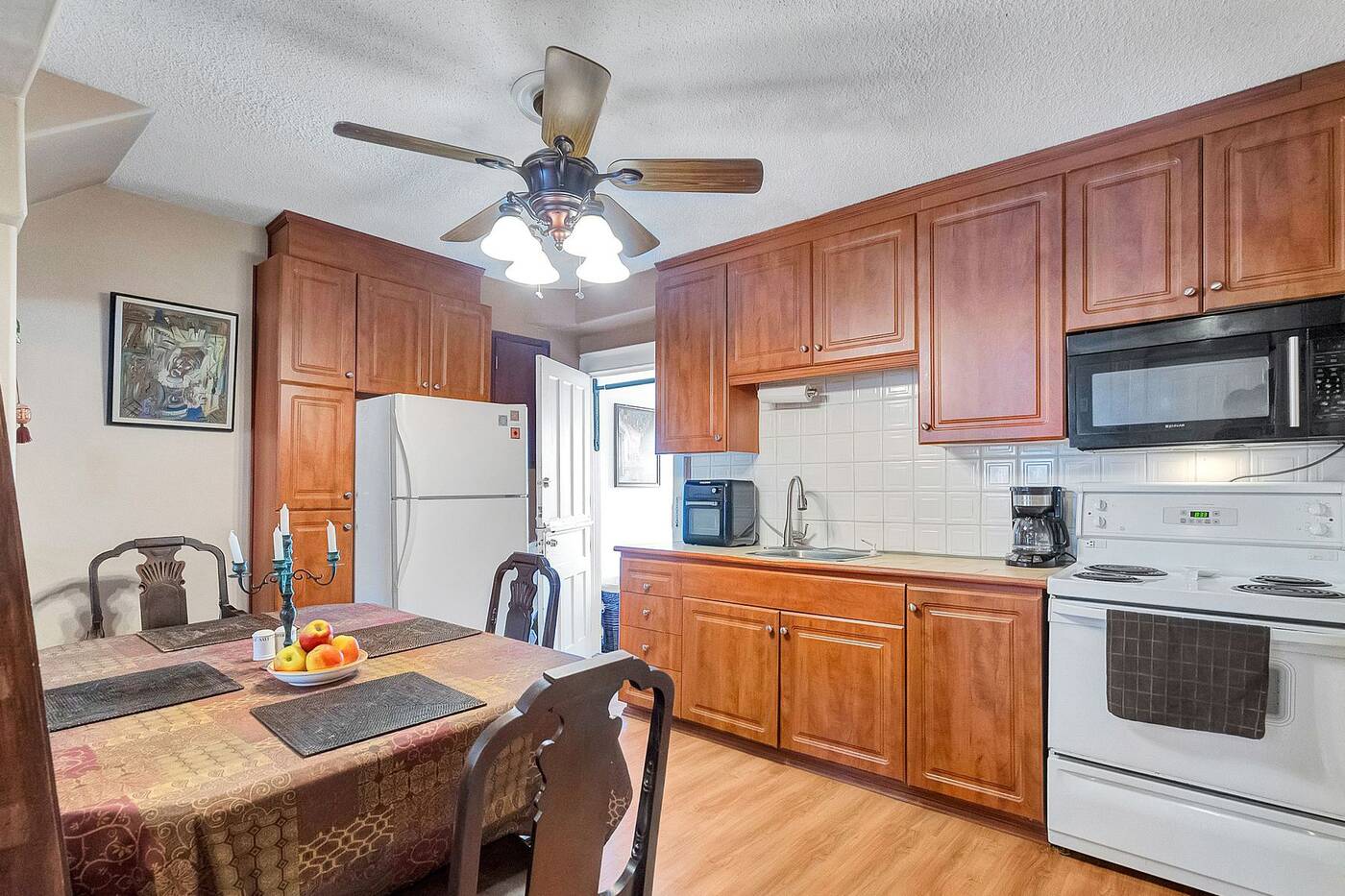

The kitchen has plenty of storage but, sadly, no dishwasher.
The main floor has a living room and kitchen with enough space for a dining table.
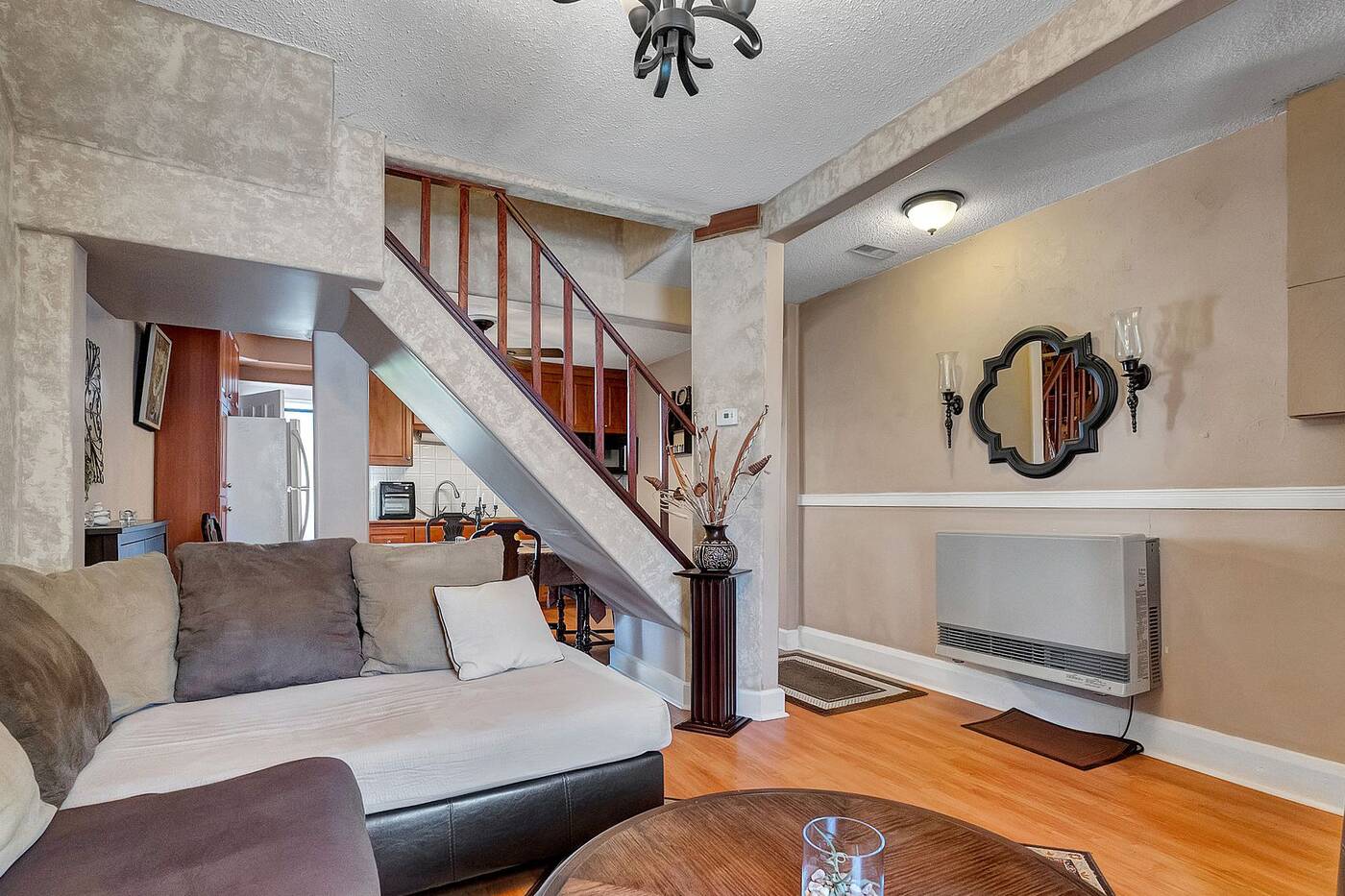

The main floor.
The layout is a bit awkward but the Dutch door off the kitchen is too cute.
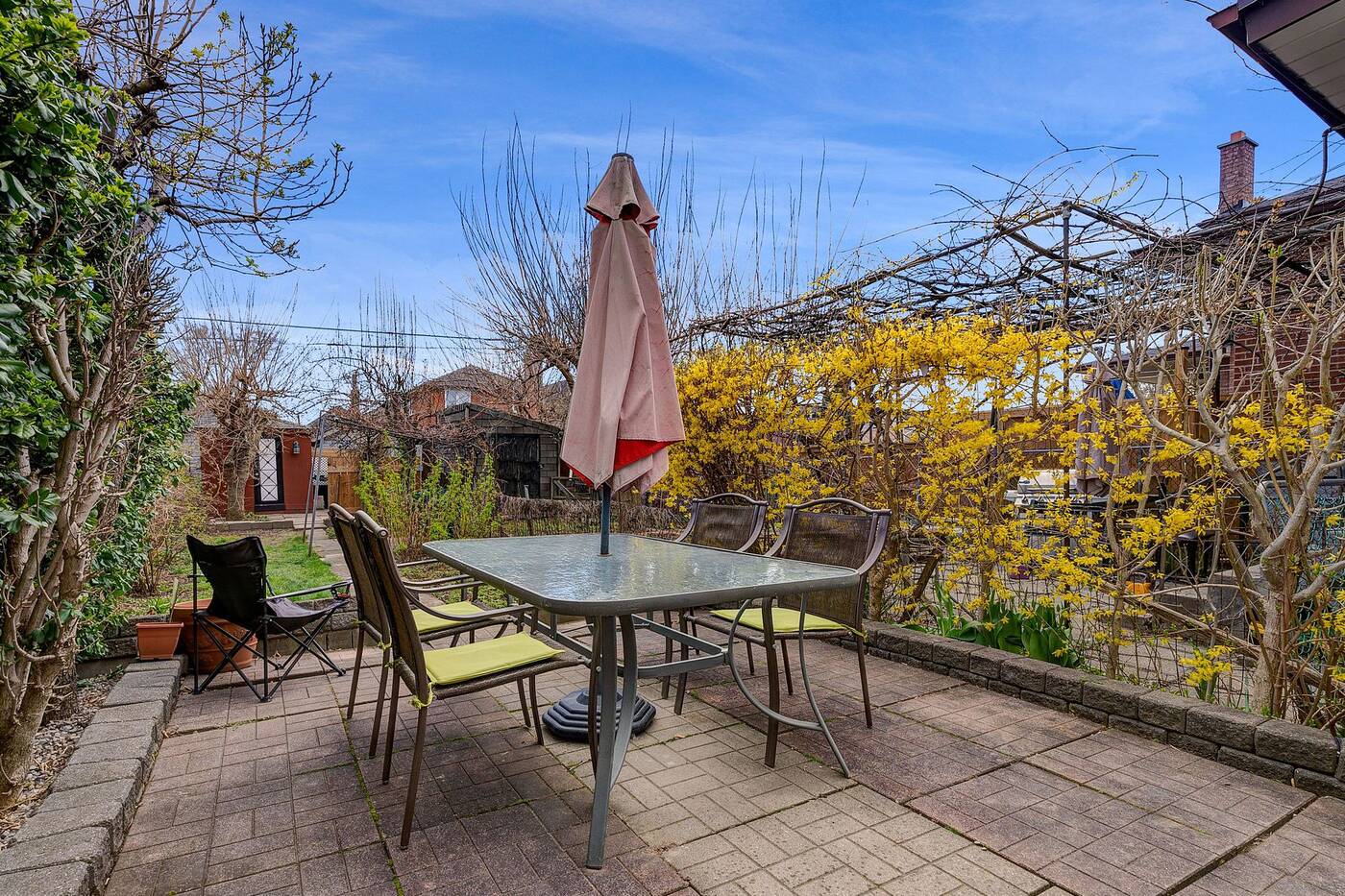

The back patio.
Off the kitchen is a laundry room/mud room that leads to the spacious backyard.
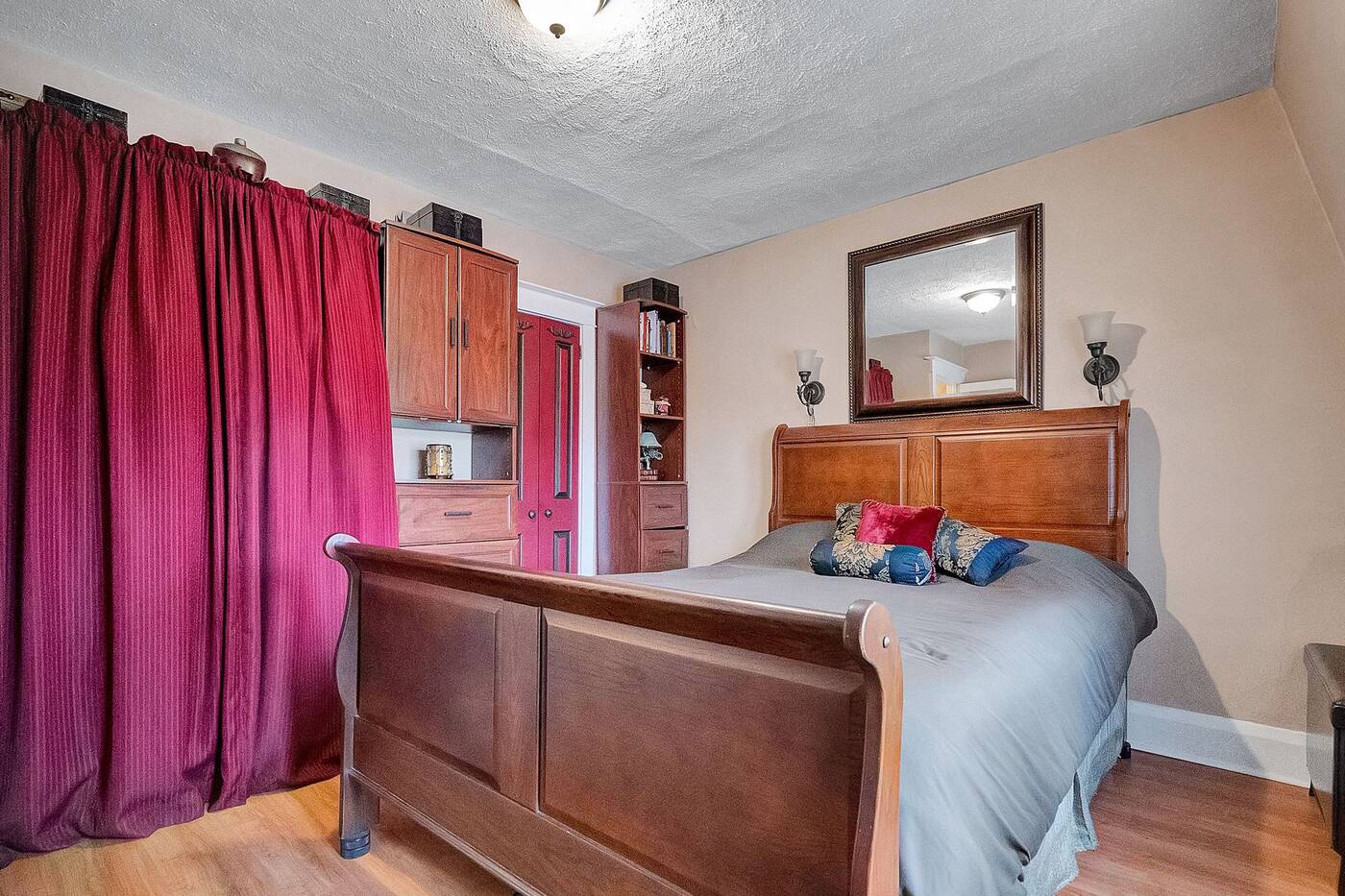

The primary bedroom.
Upstairs, there are two decently sized rooms and a small bathroom.
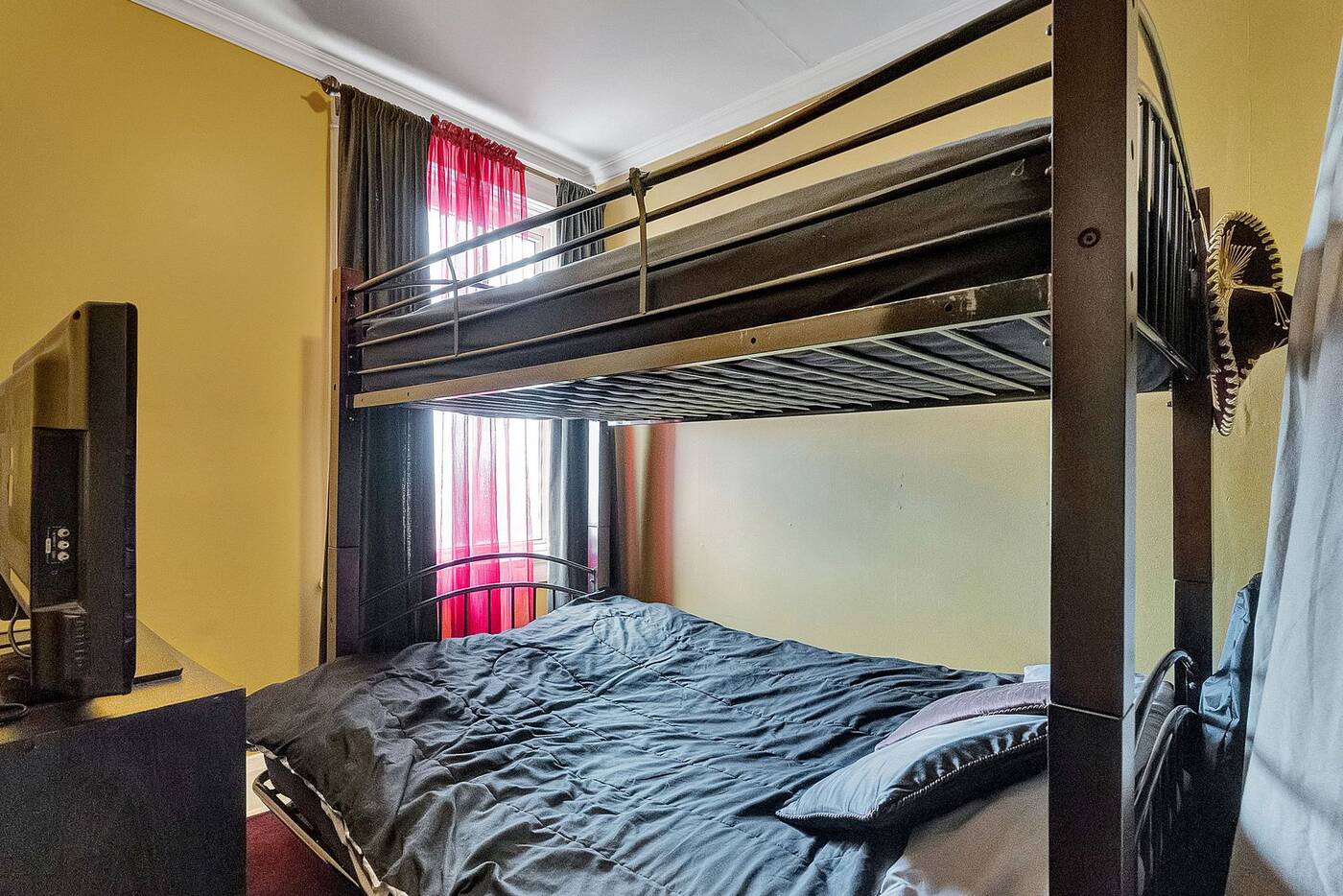

The second bedroom.
The house definitely needs some updating but the roof was done in 2015, the furnace is only a few years old, the electrical has been updated, and there’s room for expansion.
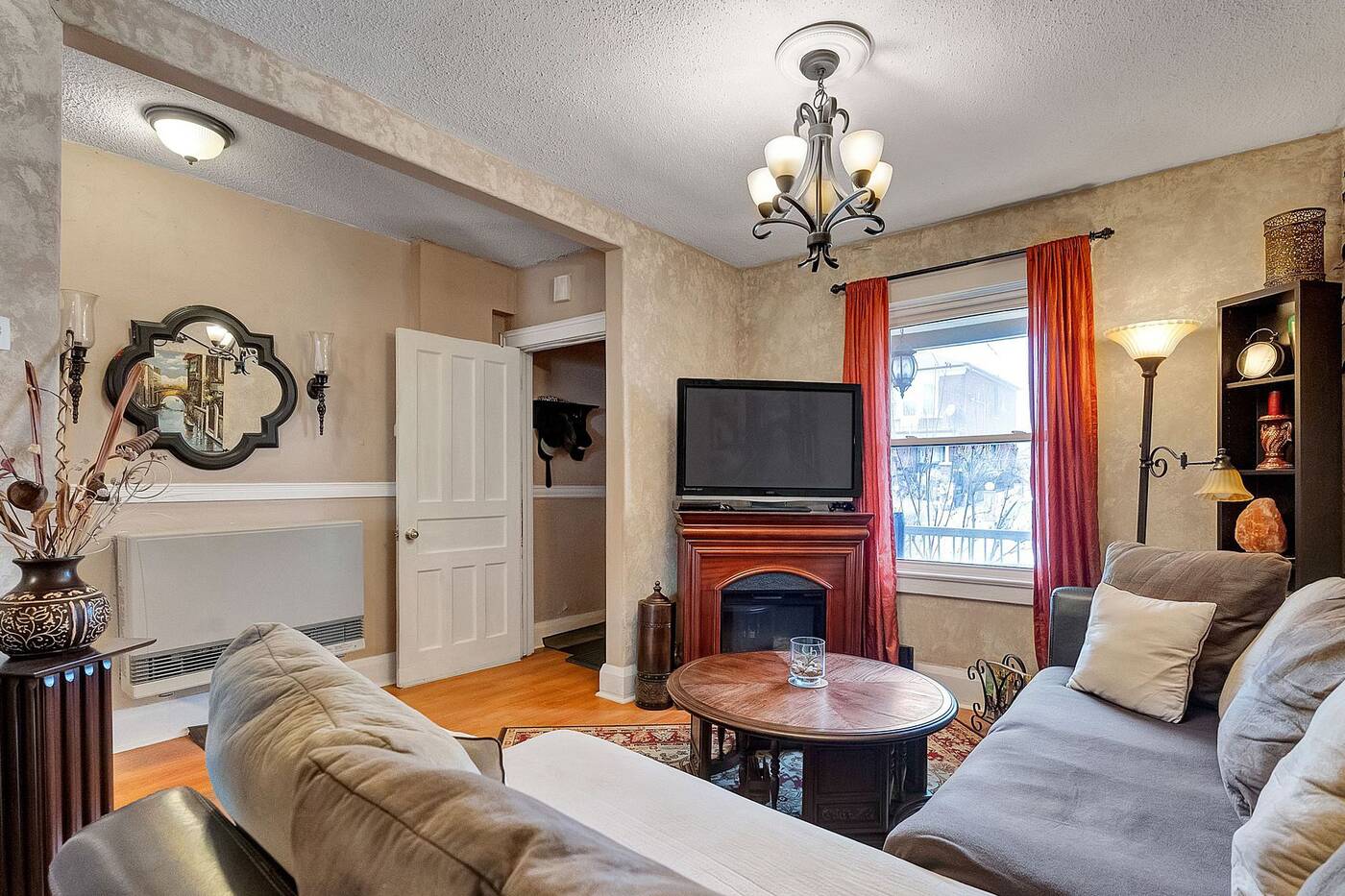

A fireplace in the living room.
Also, a coat of paint will do wonders to brighten up the all-beige ’90s aesthetic.
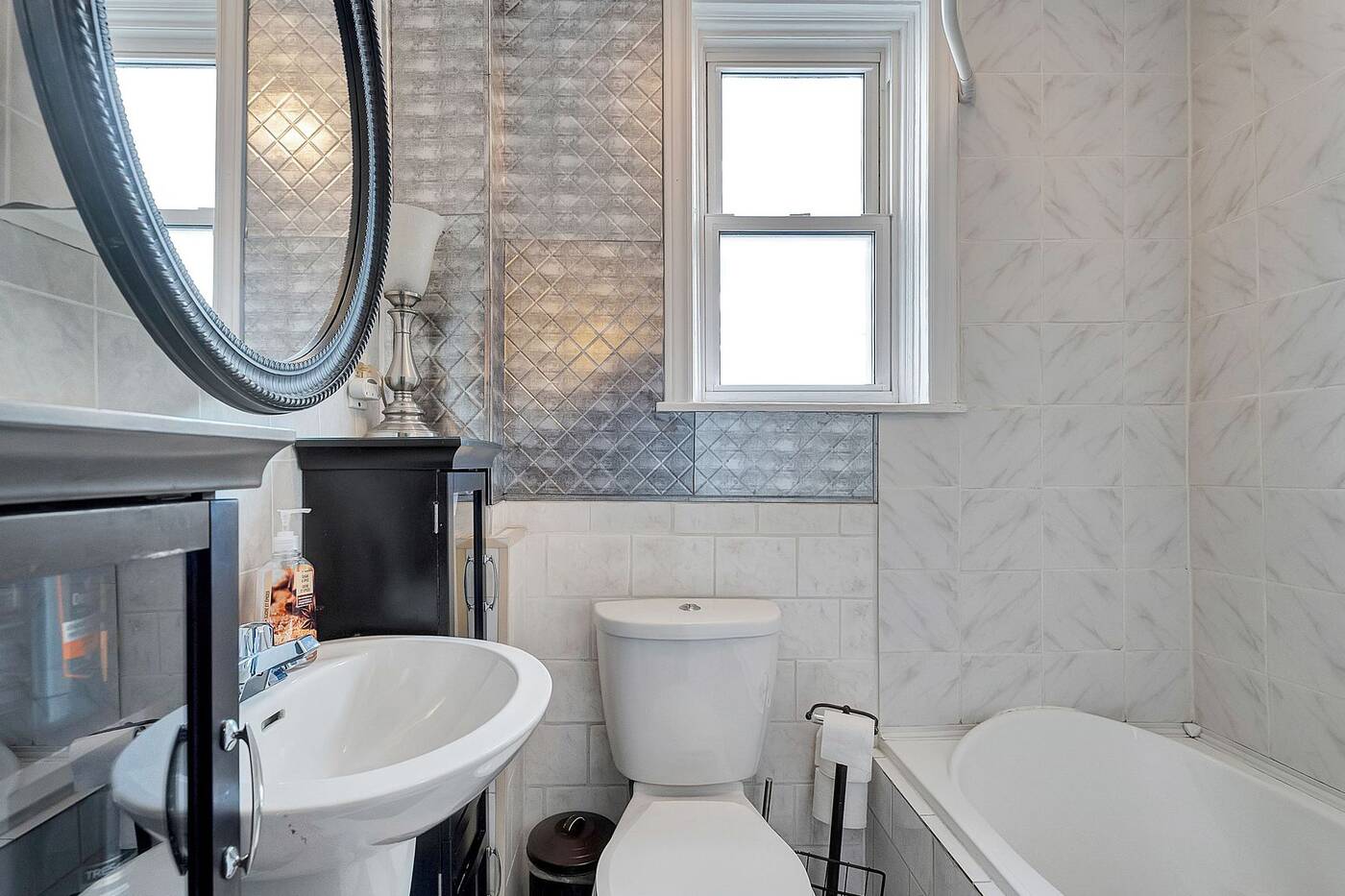

The small bathroom.
However, the biggest selling point of this home is the price point.
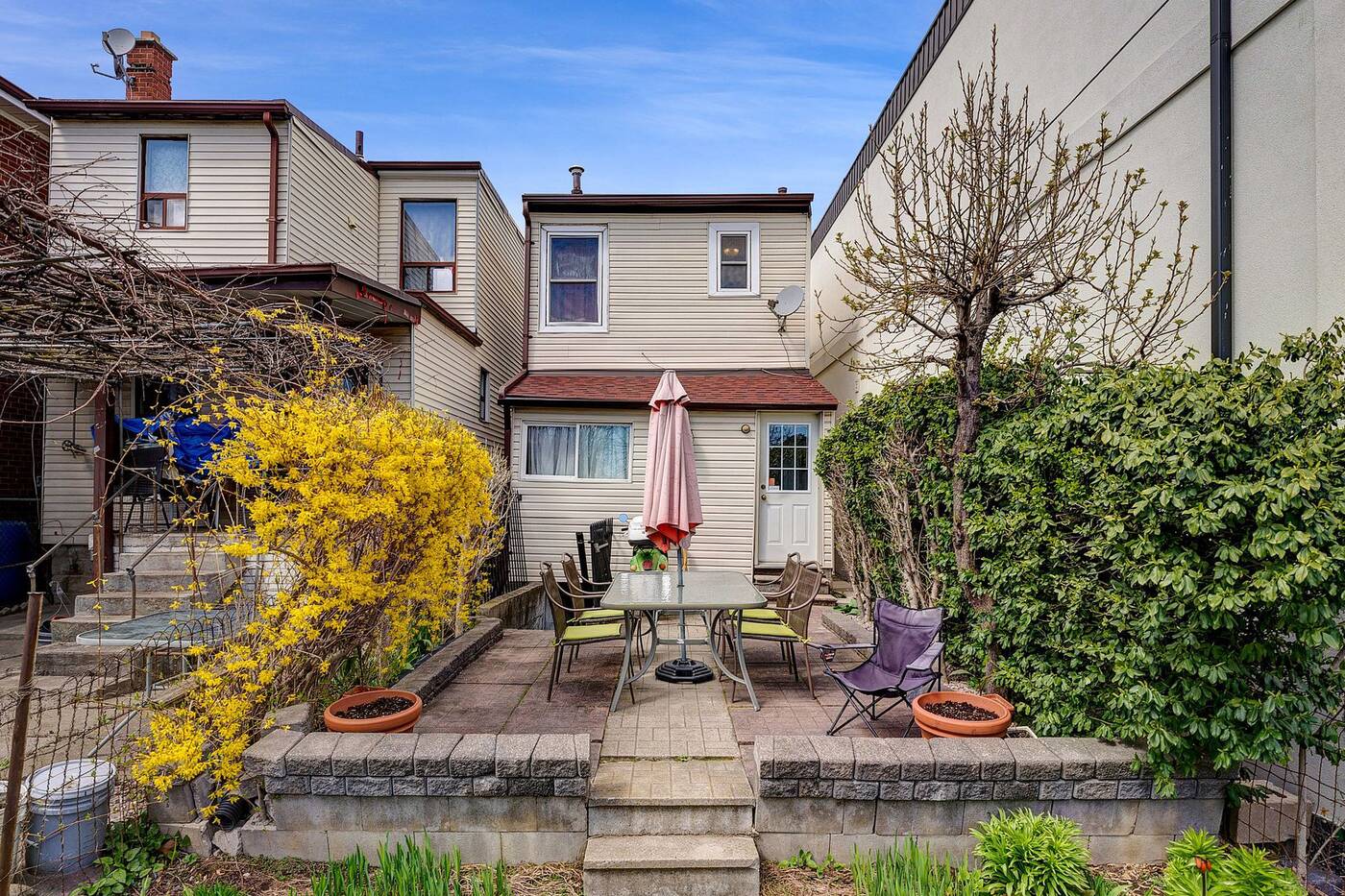

The back of the house.
39 Hatherley Rd. is listed for only $599,999, which is almost unheard of in Toronto, even if this place will probably go for closer to $700K.





-



 Health17 hours ago
Health17 hours agoRemnants of bird flu virus found in pasteurized milk, FDA says
-
Art23 hours ago
Mayor's youth advisory council seeks submissions for art gala – SooToday
-



 Health21 hours ago
Health21 hours agoBird flu virus found in grocery milk as officials say supply still safe
-



 Investment21 hours ago
Investment21 hours agoTaxes should not wag the tail of the investment dog, but that’s what Trudeau wants
-
News13 hours ago
Amid concerns over ‘collateral damage’ Trudeau, Freeland defend capital gains tax change
-
Art17 hours ago
Random: We’re In Awe of Metaphor: ReFantazio’s Box Art
-
News22 hours ago
Peel police chief met Sri Lankan officer a court says ‘participated’ in torture – Global News
-
Art22 hours ago
An exhibition with a cause: Montreal's 'Art by the Water' celebrates 15 years – CityNews Montreal




